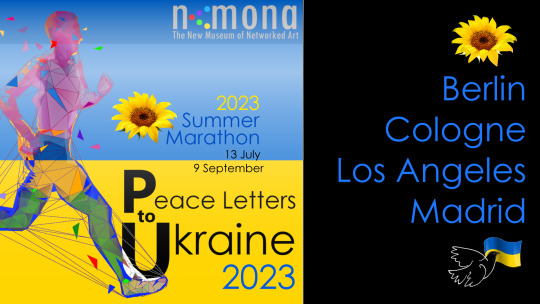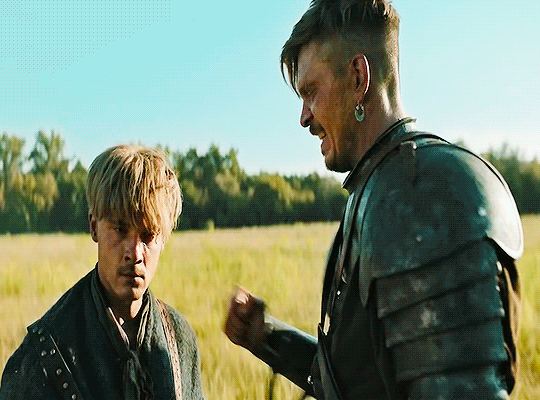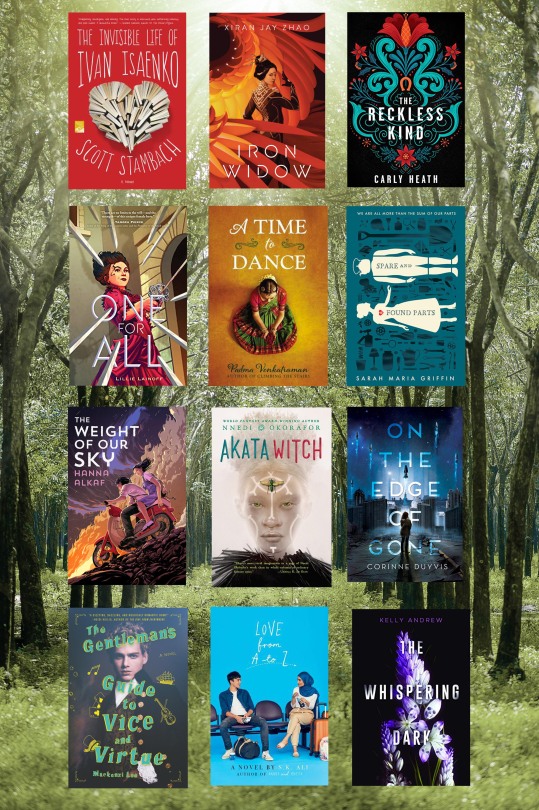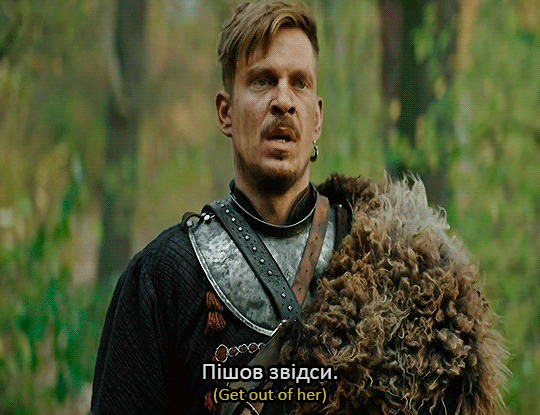#isaenko
Explore tagged Tumblr posts
Photo

Morning Surf, Peggy’s Cove, Nova Scotia by Sergey Isaenko | 500px
(via Pin page)
92 notes
·
View notes
Text
In March, the International Criminal Court issued arrest warrants for Russian President Vladimir Putin and his Children’s Rights Commissioner Maria Lvova-Belova, accusing them of complicity in the unlawful deportation of Ukrainian children (a war crime). According to Lvova-Belova herself, 700,000 Ukrainian children have been transported to Russia since February 2022, including 1,500 who allegedly ended up in orphanages. Media reports indicate others have been placed in foster homes or been “adopted” into Russian families. In a new investigation, the independent outlet iStories identified several Ukrainian children being held in Russian orphanages and uncovered how they’re being “reeducated” and taught the “patriotic values” of their “new homeland.” Meduza is publishing an English-language version of the story.
A new homeland
Valeria stands on the stage of an orphanage in Nizhny Novgorod, dressed in a traditional Russian folk costume. She’s performing for a Russian Unity Day celebration. “We are [one] people, and we are united — together we are invincible!” she recites. The teachers praise her and the other children for their “good knowledge of the history of the big and little Homeland.”
Valeria’s homeland is Ukraine. She, her siblings, and other orphaned children were taken from the occupied Donetsk region following Russia’s full-scale invasion. Their profiles are included in Russia’s federal orphan database, where Russians can look for children to foster or adopt. iStories estimates that by summer 2023, there may have been nearly 2,500 orphaned and unaccompanied Ukrainian children in this database. All of them, like Valeria, are taught to love their “new homeland.”
In February, a year after Russia started its full-scale invasion of Ukraine, the Naryshkino orphanage solemnly unveiled a memorial plaque in honor of one of its graduates: Ramis Isaenko. In fall 2022, he enlisted in Wagner Group from a prison where he was serving out a sentence. Two months later, he died in Ukraine. “He fought for the freedom of the ‘LNR’ [the self-proclaimed ‘Luhansk People’s Republic’] and died a brave death on the battlefield, showing courage and valor,” the plaque reads. It makes no mention of his criminal history.
Isaenko had three convictions: for stealing, buying drugs, and failing to pay alimony. He first went to prison in 2017, on drug charges. In 2020, he tried to steal from a store and got a suspended sentence, but six months later he was back on trial for a series of car battery thefts. Isaenko was given four years in a high-security prison. After his death, his record was expunged due to “pardon and death.” Isaenko was already a combat veteran when he received his first conviction. By the second, he was under the care of an addiction specialist and seeing a psychologist for “disturbing changes in personality.”
While Isaenko was at war in Ukraine, nearly 60 children from the Donetsk region were brought to his orphanage. A few months later, they took part in the unveiling ceremony for his memorial plaque — a plaque honoring a man who fought against their country.
At the Naryshkino orphanage, great attention is paid to patriotic education. The children regularly meet with a Soviet–Afghan War veteran turned priest, who tells them about “true patriotism” and “the feats of the holy defenders of Rus’” whom “the Lord called to service.” The students dedicated a “hero’s desk” to a graduate who died in Afghanistan, celebrated Russian Flag Day, met officials from the Russian Federal Protective Service, Interior Ministry, Prosecutor’s Office, and Federal Security Service (FSB). Children who have suffered through the devastation of Russian aggression were made celebrate “Reunification Day” (a new holiday marking Russia’s annexation of Ukrainian territories) and listen to stories from active military personnel (orphanage alumni) about their “feats” in the war against Ukraine.
iStories identified seven children at the school who’d been taken from the Donetsk region and attended these “patriotic” events. They’re all listed in the Russian federal orphan database. One of them was ceremoniously given a Russian passport on their 14th birthday.
In October, the Naryshkino orphanage was under threat of closure. The staff appealed to Putin with a request to save the institution. “We currently house children brought from the Donetsk People’s Republic. These children have been so united by a common tragedy and constant relocations that they live as one big family, helping and caring for each other as if they were real brothers and sisters. Moreover, many of them are indeed blood relatives,” the petition read.
The management forwarded questions about the orphanage’s closure and the fate of the children to the regional education department. At this writing, there was still no response.
A new family
In October 2022, at least nine new pupils from Russian-occupied areas of Ukraine arrived at the Trajectory Center, an orphanage primarily for children with special needs. At the center, students write letters of encouragement to soldiers fighting in the “special military operation.” Some of these letters read, “Our dear heroes, defenders, we’re proud of you! Thank you for your courage. There’s nothing stronger than the heart of a soldier! The strength and spirit of the Russian people is with you!”
iStories was able to identify three of the children at the Trajectory Center taken from Ukraine’s Donetsk region. All of them are up for adoption, not just guardianship. Unlike guardians, adoptive parents receive the same rights as biological parents and can change the child’s name and personal information. It would be extremely difficult for relatives to get deported children back if they’ve been adopted.
Russian Children’s Rights Commissioner Maria Lvova-Belova has repeatedly emphasized that Russians cannot adopt children from annexed territories. (Although she herself “adopted” a teenager from Mariupol.) It’s unclear why children taken to Trajectory are up for adoption; the center told iStories that some of them were placed under guardianship.
The center teaches the deported children to be true “patriots.” The director, Dmitry Batishchev, also heads the regional branch of the pro-war “We don’t abandon our own” movement. The children help weave camouflage nets, make trench candles, and collect socks and balaclavas, all of which the movement sends to Russian military personnel. They also send video messages to the soldiers thanking them for their service, wishing them victory, telling them the “truth” is on their side, and praising Russia as a bastion of “hope, compassion, military valor, and honor.”
Russian authorities don’t believe these kinds of activities are harmful to children who were taken from occupied territories. On the contrary, Lvova-Belova says that “it’s important to understand that the ‘DNR’ and ‘LNR’ territories have been shelled by the Ukrainian army for many years, and most of the orphaned children from the republics’ social institutions are aware of this.” According to her, “the children don’t see Russia as an enemy: they expect protection and assistance from it, so being placed in safe Russian [adoptive and foster] families isn’t a traumatic experience for them.”
3 notes
·
View notes
Video
Comment Show | Opening titles from PAPATON Studio on Vimeo.
We’re ready to introduce the collage-style opening sequence we made for the "Comment.Show" on YouTube ⚽️ Our main task was to present the title and central concept of the soccer show, to give viewers a brief idea of what they’re about to see. All the faces of the hosts and guests of the show are taken from actual footage, so we paid special attention to the emotions that we show in the opening sequence.
Creative Director: Anton Ten Art Director: Tatiana Agievich Executive Producer: Nikita Tikhonov Producer: Sofia Solovyanova Illustrators: Olga Khaletskaya Animators: Leonid Pustelenin, Ilya Isaenko
Made by PAPATON ~ papaton.studio facebook.com/papaton.studio instagram.com/papaton.studio be.net/papaton
0 notes
Text


You can see my video work 'Nostalgia', 2022 in the Peace Letters to Ukraine - Summer Marathon 2023
20-23 July 2023
Peace Letters Summer Marathon 2023
on way from Bremen to Cologne (Germany)
streaming
@ The Violence Darkroom // MVC - Mobile Violence Cinema
https://peace-letters.nmartproject.net/p-l-u-16/ - presenting
Program 1
featuring a selection from Peace Letters to Ukraine 2
curated by Wilfried Agricola de Cologne
Shelley Jordon (USA) – Surge, 2022, 2:28
Dee Hood (USA) – To Bridge Or Not To Bridge, 2022, 3:48
Abdoul-Ganiou Dermani (Togo) – Resilience, 2022, 1:49
Francesca Ruth Levi (UK) – Lazarus, 2021, 5:34
Jana Schmück & Johannes C. Gerard (NL) – View Behind the Curtain, 2021, 6:06
Justyna Maluchnik (Poland) – Freedom, 2009, !3:18
Hagit Kastel Nachsholi (Israel) – Ukraine, 2022, 3:01
Marie Magescas (France) – WARdesease, 2010, 8:30
Wilfried Agricola de Cologne (Germany) – Song of Day After, 2017, 4:10
Albert Merino (Spain) – Memories of Detachment, 2021, 18:00
Ian Gibbins (Australia) – Homeless, 2017, 4:17
Marcantonio Lunardi (Italy) – The Cage, 2016, 5:46
Mária Judóvá (Czech Republik) – Metaphors of The Body, 2013, 6:04
Francesca Lolli (Italy) – The Last Day Of Humanity , 2014, 01:49
Monika K. Adler (UK) – Nostalgia, 2022, 7:28
Laura & Sira Cabrera (Spain) – Tune In To Nature, 2021, 9:43
Yssa Marie Flores (Philppines) – Painting the Light, 2022, 1:00
Bruno Pavic (Croatia) – The Message, 2022, 01:03
Program 2
Videoart from Ukraine - Peace Letters to Ukraine 1
selection – curated by Wilfried Agricola de Cologne (Cologne)
Anna Kryvenko – Silent Like A Comet, 2014, 8:14
Oksana Chepelyk – «Letter from Ukraine», 2014, 7:31
Lena Nosenko – Wait form me, 2010, 4:35
Lidia Starodubtseva – Time Is Up, 2018, 4:00
Kostia Vozniuk – Woman in her own room,2017, 04′ 08”
Alexander Isaenko – The Negative Selection, 2012, 3:30
Nataliia Mashtaler – Demonstration Lesson, 2012, 13:40
Oleg Kharch – Fakemet, 2019, 3:46
Oleg Chorny- The Tree, 2019, 6:40
Alexander Yeltsin – Warning, 2014, 5:37
Peace Letters to Ukraine -
since 2 March 2022 - international artists in solidarity with Ukraine
1 note
·
View note
Text
thank youuu for the tag, my favorite book character is ivan isaenko
i think i might have the upper hand since he’s missing lots of limbs but you never know
tags!
@dyocidio @evansroses @mistysconcilium @hauntinggviolet @casimirsstache @luccaa111
I thought of a cool tag game
So first say your favorite book character then if you were to take them on in a fight how fucked are you? Then tag as many people as you can in it.
Leo Vantiz (Heroes of Olympus series): I am probably dead because little boy can turn in to a match in less then thirty seconds!
@bonsai-maze @shroombloom248 @attackweeb @alyxanderthetranskid @aneptunicperson
401 notes
·
View notes
Photo

Whispin' o'er em hills #BlueRidgeMountains #Landscape #BRP #BlueRidge #BlueRidgeParkway #Parkway #Boone #NC #BlowingRock #Color #Light #isaenko #skies #mountains #hills #Spring #Summer #myblueridge #blueridgeoutdoors #canon
#nc#myblueridge#blueridge#blueridgeoutdoors#blueridgemountains#spring#landscape#boone#parkway#color#brp#isaenko#mountains#skies#summer#canon#hills#light#blueridgeparkway#blowingrock
1 note
·
View note
Text
🇧🇾 Belarus
Region: Eastern Europe
Author: Scott Stambach

326 pages, published 2016
Original language: English
Native author? No
Age: Teen
Blurb:
Seventeen-year-old Ivan Isaenko is a life-long resident of the Mazyr Hospital for Gravely Ill Children in Belarus. Born deformed yet mentally keen with a frighteningly sharp wit, strong intellect, and a voracious appetite for books, Ivan is forced to interact with the world through the vivid prism of his mind. For the most part, every day is exactly the same for Ivan, which is why he turns everything into a game, manipulating people and events around him for his own amusement.
That is, until a new resident named Polina arrives at the hospital. At first Ivan resents Polina. She steals his books. She challenges his routine. The nurses like her. She is exquisite. But soon he cannot help being drawn to her and the two forge a romance that is tenuous and beautiful and everything they never dared dream of. Before, he survived by being utterly detached from things and people. Now Ivan wants something more: Ivan wants Polina to live.
Other reps: #disability, physical #disability, illness #straight
Genres: #contemporary #romance
My thoughts:
In a hospital with “invisible” children given up for their disabilities, two young people find romance, and perhaps change themselves. Sounds touching, and unique, and I am interested to read.
Review to come.
Kindle link
#belarus#eastern europe#ya world challenge#book blog#disability representation#book rec#the invisible life of ivan isaenko#scott stambach#europe#disability physical#disability illness#straight#contemporary#romance
5 notes
·
View notes
Photo


#Кіборги#cyborgs#Козаки. Абсолютно брехлива історія#Cossacks. Absolutely a false story#Andriy Isaenko#oleksandr piskunov#Ukrainian Cinema#ukrainian tv
14 notes
·
View notes
Photo









books I read + 2017: THE INVISIBLE LIFE OF IVAN ISAENKO by scott stambach
Don’t die before you’re dead. And if you do, let it be the good kind… When the only part of you that dies is who you were supposed to be.
#the invisible life of ivan isaenko#scott stambach#books#books2017#books 2017#books 2k17#myedits#yalitedit#litedit
3 notes
·
View notes
Text
Whoo boy my brain is overwhelmed right now but I wanted to give my thoughts on a disability-related book I just finished in just a few days: The Invisible Life of Ivan Isaenko. As a physically disabled person who works in a school for the blind (and all manner of other additional physical & mental disabilities) it was exciting to pick up a book that actually had disabled characters at its center.
The book centers around a disabled teenager, Ivan, who has lived his whole life in a small hospital populated with other sick/disabled youths in Belarus who were born in the wake of Chernobyl. Ivan is missing all limbs except one hand and is facially disfigured. He has basically nothing to do in this hospital he’s spent his entire life in, and he has a decent cognitive ability, so his boredom leads him to be an asshole to everyone around him. Enter sick girl that he’s interested in, Polina, and he befriends her and they end up having a little romance (not too nauseating for me) before she dies.
I got this book at the dollar store, so I wasn’t expecting much. Instead, I found myself drawn in as I found a book that (finally) was filled with disabled characters and didn’t paint an inspiration-porn picture. If anything, it was very much on the gritty and grim side of things. I flew through the book in three days and really enjoyed it, though it did make me sad at some points.
Out of curiosity, I hopped over to Goodreads only to find that the review page for this book is a bit of a shitshow. An Autism Mom took great offense to this book because of the way some autistic-coded side characters were described in the book. It wasn’t exactly pretty, but the narrator described how they were analyzed and treated by Soviet-era doctors (for example, a nonverbal boy named Dennis who spends most of his day rocking was diagnosed by doctors as having “no soul” and Ivan uses his rocking periods to measure time because they are consistent; he also plays pranks on nonverbal twins in order to try to elicit a response). Look, I love and respect neurodivergent people and I value their opinions - but hearing an opinion from a mom is not the same as hearing an opinion from the ND individual.
I didn’t think the narrator had a particularly bad opinion of the autistic-coded characters - he’s just an asshole who plays pranks to fill his endless days of hospitalization. He didn’t particularly care about his fellow patients as people, same as he didn’t care about the nurses or anyone else (save one motherly nurse who was actually nice to the kids). He details the abuses dealt to the other kids by the nurses and calls them cruel. He iterates the diagnoses of the kids as he understands them in Soviet-era medical context. I don’t find his descriptions to be malicious (though his pranks were) or derogatory; mostly, he just states his observations. Ivan, the narrator, doesn’t read as the most neurotypical individual either, mind you.
Of course all of the disabled characters had value and deserved compassion, but to Ivan, they were side characters in his story. I wish he had engaged with more of them in a positive way (he sometimes spent time reading stories or caring for a baby, Max, but that’s about it), and not solely befriended the cancer girl who was described as pretty. The book wasn’t perfect by any means, but it didn’t read to me like a hateful rhetoric trashing neurodivergence/developmental disabilities. I respect other people’s opinions, but it was enjoyable for me to read a grim disabled perspective for the first time in a long time.
TL;DR: I enjoyed the book The Invisible Life of Ivan Isaenko, which centers around a disabled narrator in a Soviet-era hospital for sick/disabled kids in Belarus. Read at your own discretion, since it has sparked controversy, mostly in the Autism Moms community.
Yes, I would love to see better autism/ND representation. But as I read it, this book didn’t seem hateful towards the ND characters - it read to me as fairly neutral and era-accurate. No book is gonna have it all, and this was a decent story (in my opinion) about a physically disabled teenager.
I’m completely open to discussion from other members of the disabled/neurodivergent community, if anyone happens to read this book.
#disability lit#disability#disabled characters#disability books#book review#my writing#my post#neurodivergent characters
19 notes
·
View notes
Photo

© All rights reserved by Sergey Isaenko
184 notes
·
View notes
Text

Crystal Mill, Colorado - by Sergey Isaenko
312 notes
·
View notes
Link
Исаенко Дмитрий: строитель-разоритель и его 150 миллионов наличными. ЧАСТЬ 2 Связи этого экс-чиновника в строительной мафии Киева (которую он и создавал) столь велики, что после своего увольнения он продолжил успешно заниматься застройкой. Так, его фирма «Катерпиллер» строит ЖК «Stanford» на Предславинской 35, «Ника ЛТД» собралась строить 33-этажный дом на улице Франка, а «Спе��мехбуд 21» выступает подрядчиком на строительстве двух высоток у станции метро «Дворец Украина». Причем, это строительство так и не согласовали с метрополитеном — а если дома провалятся в тоннели?! В городе, где то и дело обваливаются мосты и проваливается земля, и не такое возможно! И мы прекрасно понимаем, что Дмитрию Исаенко в любом случае ничего не будет, ведь он уже много раз ловко уворачивался от длани закона.
-- Подписывайтесь на наш канал в Telegram! (https://t.me/skelet_info) Только новые лица в рубрике СКЛЕП --
#Дмитрий_Исаенко #новости #Украина #СКЕЛЕТ_инфо #SKELET_info
1 note
·
View note
Text
World YA/NA Books featuring Disabilities

July is Disability Pride Month, so I threw together some internationally-flavored books that feature various disabilities (by no means a complete list!) Comment with more suggestions if you have some!
🇧🇾 Belarus
The Invisible Life of Ivan Isaenko by Scott Stambach (physical disability from birth, uses wheelchair)
🇨🇳 China
Iron Widow by Xiran Jay Zhao (uses cane & wheelchair)
🇳🇴 Norway
The Reckless Kind by Carly Heath (deafness)
🇫🇷 France
One for All by Lillie Lainoff (POTS)
🇮🇳 India
A Time to Dance by Padma Venkatraman (prosthetic leg)
🇮🇪 Ireland
Spare and Found Parts by Sarah Maria Griffin (prosthetics, heart condition)
🇲🇾 Malaysia
The Weight of Our Sky by Hanna Alkaf (OCD)
🇳🇬 Nigeria
Akata Witch by Nnedi Okorafor (albinism)
🇳🇱 Netherlands
On the Edge of Gone by Corinne Duyvis (autistic) ��
🇬🇧 🇪🇺 Britain/Europe
A Gentleman’s Guide to Vice and Virtue by Mackenzi Lee (epilepsy)
🇶🇦 Qatar
Love from A to Z by S.K. Ali (multiple sclerosis)
🇺🇸 United States
The Whispering Dark by Kelly Andrew (deafness)
🇬🇧 Wales
The Bone Houses by Emily Lloyd-Jones (chronic pain)
#book list#disability pride month#disability#ya world challenge#diverse books#disability books#disability representation#belarus#china#norway#france#india#ireland#malaysia#nigeria#netherlands#united kingdom#qatar#united states#wales#asia#africa#europe#disability physical#disability illness#disability mental#ocd#prosthetic#autistic#albinism
53 notes
·
View notes
Photo


12 notes
·
View notes
Photo


Milana’s First Birthday!
1 note
·
View note